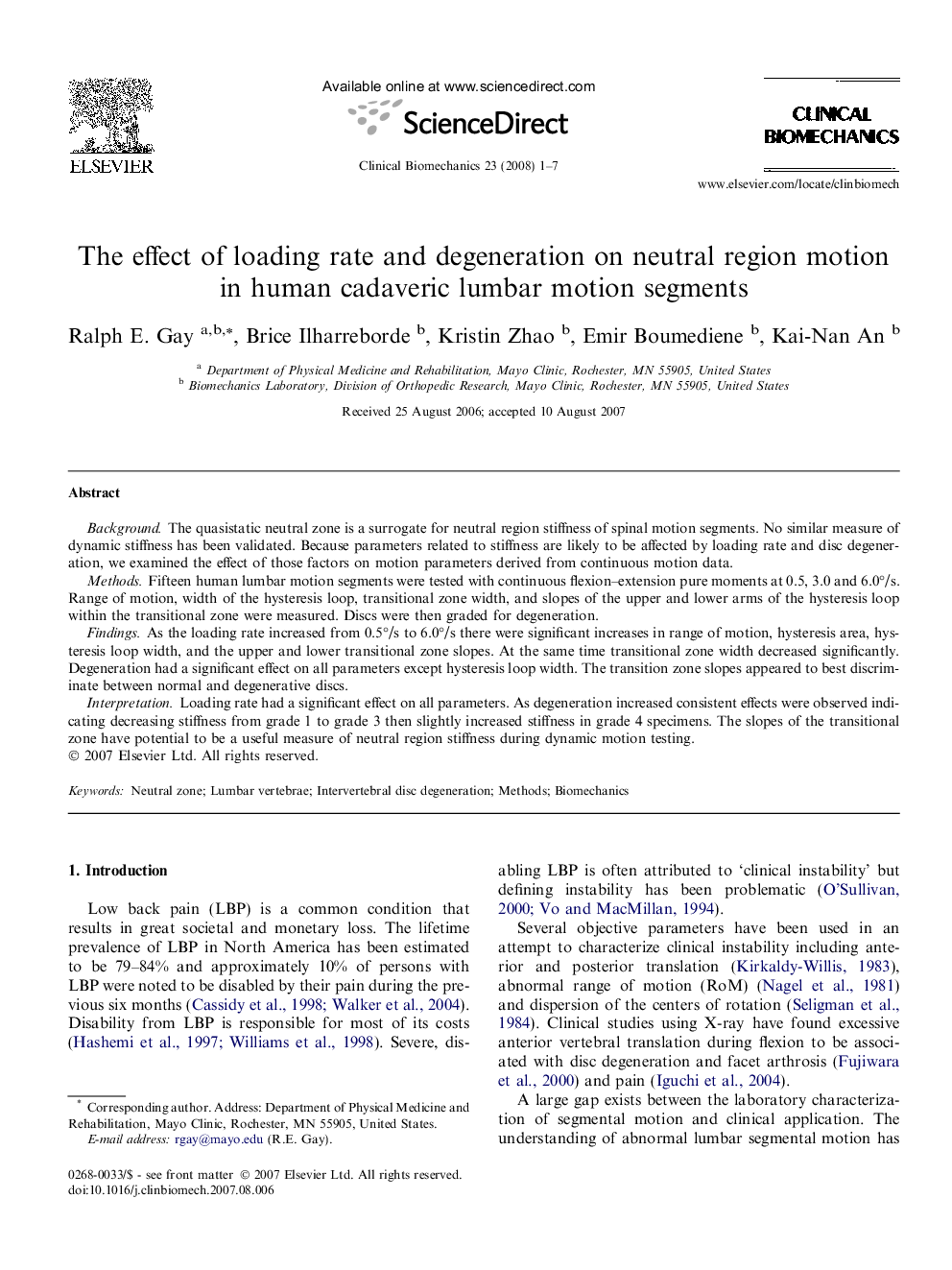| Article ID | Journal | Published Year | Pages | File Type |
|---|---|---|---|---|
| 4051659 | Clinical Biomechanics | 2008 | 7 Pages |
BackgroundThe quasistatic neutral zone is a surrogate for neutral region stiffness of spinal motion segments. No similar measure of dynamic stiffness has been validated. Because parameters related to stiffness are likely to be affected by loading rate and disc degeneration, we examined the effect of those factors on motion parameters derived from continuous motion data.MethodsFifteen human lumbar motion segments were tested with continuous flexion–extension pure moments at 0.5, 3.0 and 6.0°/s. Range of motion, width of the hysteresis loop, transitional zone width, and slopes of the upper and lower arms of the hysteresis loop within the transitional zone were measured. Discs were then graded for degeneration.FindingsAs the loading rate increased from 0.5°/s to 6.0°/s there were significant increases in range of motion, hysteresis area, hysteresis loop width, and the upper and lower transitional zone slopes. At the same time transitional zone width decreased significantly. Degeneration had a significant effect on all parameters except hysteresis loop width. The transition zone slopes appeared to best discriminate between normal and degenerative discs.InterpretationLoading rate had a significant effect on all parameters. As degeneration increased consistent effects were observed indicating decreasing stiffness from grade 1 to grade 3 then slightly increased stiffness in grade 4 specimens. The slopes of the transitional zone have potential to be a useful measure of neutral region stiffness during dynamic motion testing.
